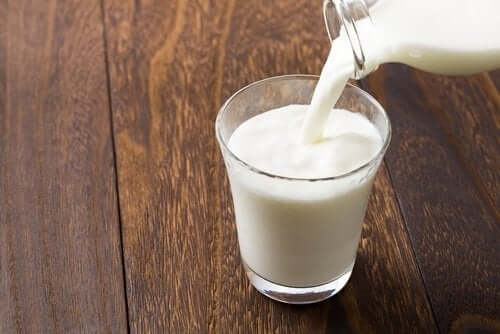The Difference Between Milk Allergy and Lactose Intolerance


Written and verified by the nutritionist Minerva Camero Albella
You’ve surely heard of dairy products and some conditions that are related to their consumption. The most mentioned are probably milk allergy and lactose intolerance.
But what’s the difference?
It’s essential to bear in mind that, although both conditions share some symptoms, they cause different effects on the body. Therefore, it’s essential to know how to distinguish them.
A milk allergy is actually an allergy to the protein in cow’s milk, while lactose intolerance is difficulty absorbing the sugar in milk, which is known as lactose.
What does milk contain?
Milk contains several nutrients:
- Proteins, including casein and whey
- Carbohydrates, such as lactose (composed of glucose and galactose)
- Fat and vitamins
In addition to these nutrients, milk also contains water.
Discover: Everything You Need to Know About Lactose Intolerance

Milk allergy or lactose intolerance?
As a study published in the British Journal of General Practice states, milk allergy is a condition that’s usually caused by milk protein fractions. Cow’s milk is the usual cause of a milk allergy. However, sheep, goats, buffalo, and other mammalian milk can also cause this reaction.
On the other hand, lactose intolerance is directly caused by the carbohydrates or sugar in milk, called lactose, which, in turn, is composed of glucose and galactose (they’re simple molecules).
When a person suffers from lactose intolerance, their body doesn’t produce an enzyme responsible for breaking it down and absorbing it.
The fundamental difference is that an allergy is a reaction mediated by the body’s immune system. However, intolerance doesn’t involve an immune response. Milk allergy is less common than lactose intolerance.
The other basic difference is that each of these conditions is caused by a different fraction of milk. One is caused by the protein and the other by the sugar or hydrate. Lactose intolerance requires different treatment than milk allergy.
Sometimes, the symptoms of intolerance improve dramatically when the patient starts taking probiotics, according to the most recent scientific studies.
Make sure you read: Lactose Intolerant? How to Know If You Are
The most common symptoms of milk allergy and lactose intolerance
Do these conditions cause different symptoms? The common signs and symptoms of milk protein intolerance or lactose intolerance include digestive problems, such as bloating, gas, or diarrhea after consuming milk or dairy products.
However, the consequences can even be fatal in milk allergy, depending on the patient’s sensitivity and immune system response. To determine whether a patient suffers from one or the other, the medical professional must ask them questions and they need to get specific tests done to observe their reaction to milk and dairy product consumption.
Allergy sufferers must avoid consuming milk, as it’s been shown to be very harmful to their health. However, lactose intolerants can consume lactose-free dairy products.

Precautions
If you’ve been diagnosed with any of these conditions, you need to check the labels not only of the foods you eat but also of the medications you take.
Many food packages can say they’re gluten-free or vegan. However, once you read the list of ingredients, you may surprisingly discover that they contain traces of milk or lactose.
Similarly, some drugs contain lactose as an excipient. To know which ones contain it, it’s a good idea to look up lists online.
Sufferers of both conditions need to follow an adequate diet. For this reason, they need to visit a nutritionist. This professional will be in charge of determining their diet based on their individual needs.
Distinguish between milk allergy and lactose intolerance
As you’ve seen, there are significant differences between lactose intolerance and milk allergy, the latter being much more dangerous. An early diagnosis is important to adapt your diet to your individual needs. Also, you may have to avoid dairy products.
In the case of those who suffer from lactose intolerance, there are less drastic solutions. They may consume lactose-free foods or take lactase enzyme pills to make sure their body metabolizes this sugar.
All cited sources were thoroughly reviewed by our team to ensure their quality, reliability, currency, and validity. The bibliography of this article was considered reliable and of academic or scientific accuracy.
- Walsh J., Differentiating milk allergy (IgE and non IgE mediated) from lactose intolerance understanding the underlying mechanisms and presentations. Br J Gen Pract, 2016. 66 (649): 609-611.
- Oak SJ., Jha R., The effects of probiotics in lactose intolerance: a systematic review. Crit Rev Food Sci Nutr, 2019. 59 (11): 1675-1683.
- Mousan G., Kamat D., Cow’s milk protein allergy. Clin Pediatr, 2016. 55 (11): 1054-63.
This text is provided for informational purposes only and does not replace consultation with a professional. If in doubt, consult your specialist.








